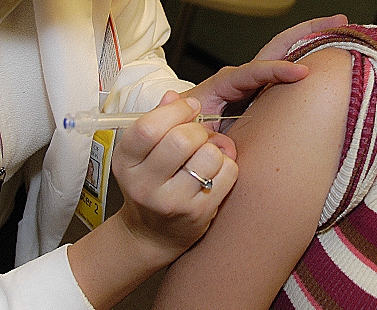Near-miss reporting aims to prevent medical mistakes

The patient who wants a flu shot doesn’t say he’s allergic to eggs, and the first nurse forgets to ask – but a second nurse does. Just before she injects the man, her question heads off a potentially fatal allergic reaction.
Just before the surgeon lifts the scalpel, he calls a time out to check the patient’s identity and discovers that this is not, in fact, the right patient.
A doctor hastily scribbles a prescription that could be interpreted as a harmful overdose, but an alert pharmacist sees the danger and calls to double-check.
The incidents that grab the headlines and receive the most study and analysis are the unusual ones – the ones where something goes horribly, often tragically, wrong. Actor Dennis Quaid’s newborn twins get overdosed with heparin and nearly die. Boston writer Betsy Lehman dies after receiving massive overdoses of chemotherapy. Closer to home, a young mother comes in to a Plant City hospital in labor and is killed by an overdose of a medication meant to stop her pre-term labor.
But each day, in busy clinics and chaotic hospitals, something far more common — and perhaps more remarkable — happens. The stage is set for just such a tragedy. Somebody makes a mistake – but somebody else notices before a patient is hurt.
Now researchers at USF Health want to know more. They’re asking doctors, nurses, and other clinicians to tell them when they catch or witness an almost-accident. It’s called “near-miss reporting,” and researchers are hoping that studying such incidents can help make USF health care safer.
“If you look at the near misses, the things where things almost go wrong, frequently, you can identify where adverse events are most likely to occur,” said Dr. Peter J. Fabri, associate dean for graduate medical education at USF Health.
Dr. Fabri’s interest in near-miss reporting comes from studying aviation safety. The federal government has sponsored a system where pilots and aviation workers can anonymously report near-miss incidents since 1975. The system began after the 1974 crash of TWA Flight 514 outside Washington, DC, which killed all 92 people on board. After the crash, investigators found there had been concerns about the air traffic terminology that contributed to the crash, but no action had been taken.
“All the pilots knew it, and all the pilots had had near-misses,” Dr. Fabri said.
The hope: that safety experts can learn enough from near-miss reports that they can head off a tragedy before it happens.
“We view this as a safety net system to try to identify the places that have the greatest likelihood of something going wrong,” Dr. Fabri said.
Think of driving a car. Every day, you tap the brakes, or prepare to swerve out of the way, to avoid a crash. All those tiny brake-taps help train you to avoid the mistakes that could lead to an accident. They may teach you more about avoiding injury than what you learn from the one time you do crash.
While nobody argues the need for investigating the cause of a medical mistake, relying solely on such investigations to police safety can send the wrong message, said Jay Wolfson, USF associate vice president of health law, policy and safety. Asking such questions on the front end helps frame patient safety as an issue of improvement, rather than pointing fingers.
“It creates an environment based on what we can do better, not just learning from our mistakes,” said Dr. Wolfson, who also is the Distinguished Service Professor of Public Health and Medicine. said. “We begin to change the culture of health care organizations as it relates to blame and shame.”
To put together the reporting system, Dr. Fabri and graduate student Laila Cure held a series of meetings with USF health providers, hearing stories about how mistakes could be made. They used that information to develop a system to classify 650 types of “near miss” incidents.
That system provides a framework for the ITAP, the Incident Tracking and Prevention System. The system is designed to be quick and – importantly for many health care workers – anonymous.
On each computer in USF’s ambulatory care centers is now a small, rectangular icon reading “ITAP.” If a health care worker clicks on the icon, a prompt will ask the person for an e-mail address. It then sends an e-mail with a link to where the report should be filed.
The system is set up that way so that a provider can be in the midst of seeing patients, take a few seconds to set up a reminder about the incident, and return to work.
Then later, when the worker is sitting down at the computer, they can file the report. The ITAP system strips the original e-mail address from the report, so it remains anonymous.
Dr. Fabri knows that step of putting in an e-mail address may scare off more timid would-be reporters. He felt that the convenience of being able to file a report later was worth that risk.
“We’re really going to have to convince people this is safe,” he said.
The reports will become part of a database of near-miss incidents. Over time, Dr. Fabri and his colleagues will analyze those data, looking for patterns and potential errors. Ultimately, those reports could mean making changes to how USF Health operates.
“It’s safe, easy and the individual doesn’t take a risk,” Dr. Fabri said. “This could help us look at places where it makes sense to put in the resources to make sure errors don’t happen.”
— Story by Lisa Greene, USF Health Communications
— Photo by Eric Younghans, USF Health Communications

